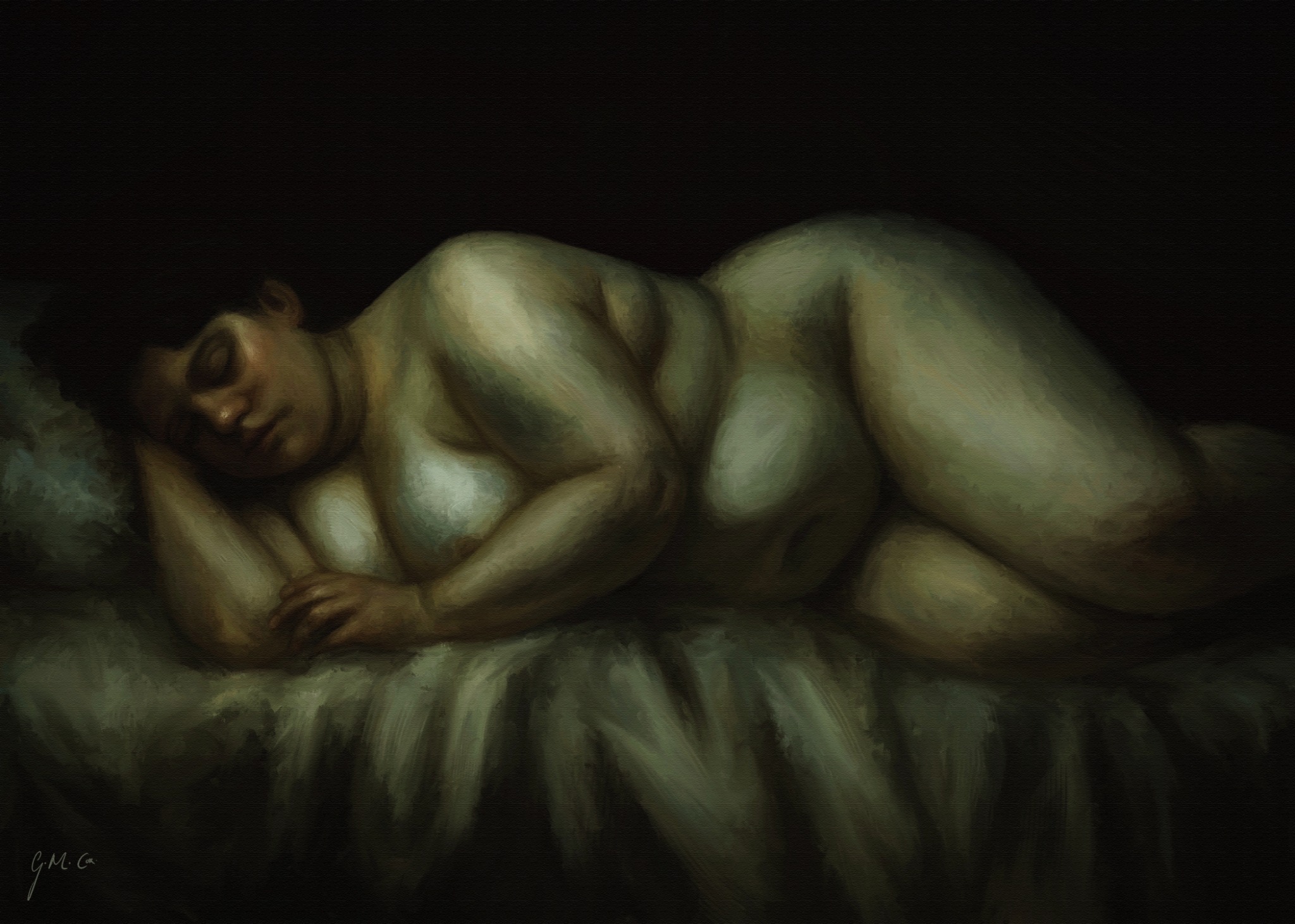
The Sacred Feeling of Living in a Body I Wish Wasn't Mine (2025)
In The Sacred Feeling of Living in a Body I Wish Wasn’t Mine, Georgina M. Cox turns the gaze inward, confronting the tension between embodiment and estrangement. A nude woman lies on her side, asleep or perhaps in a state of suspended surrender. The chiaroscuro lighting—Cox’s signature—renders her flesh luminous and tender, resisting objectification. Her body occupies the space unapologetically, heavy with presence, yet the title destabilises that serenity: to live within this body is both a sacred act and a form of grief.
⤷ Cox reclaims the tradition of the reclining nude, but instead of erotic allure, the viewer is offered vulnerability and truth. This figure is not posed for the gaze but for herself; her form is neither idealised nor shamed. The folds of her skin echo the softness of the bedding, blurring boundaries between human and environment, comfort and confinement.
The composition asks an intimate question: how does one love the body that has been both sanctuary and prison? The artist captures that contradiction—the holiness of existing within flesh that feels foreign. There’s a quiet theology here: divinity in imperfection, spirituality in survival.
Cox’s painterly restraint mirrors this internal duality. Her use of muted olive and ivory tones suggests the dim glow of morning light, the moment between waking and withdrawal. It’s a painting about living in tension with oneself, yet honouring that tension as evidence of being alive.
To live within the body is to bear witness to both pain and tenderness. Cox does not resolve this paradox, she venerates it. The subject’s sleep becomes an act of rebellion, a choosing of peace in a body that has not always felt like home.
0 Comments Add a Comment?